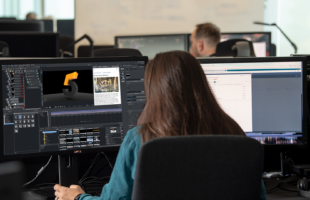The latest edition of the annual Ericsson ConsumerLab TV & Media Report has found that streaming video is now almost level with traditional TV watching, with 75 percent of consumers watching streamed content several times a week, compared to 77 percent who watch scheduled broadcast TV programming several times a week.
The study, now in its fifth year, also found that almost one in five viewers (19 percent) are prepared to pay for the ability to access their favored content on any device, an increase of 25 percent in just two years.
The results, based on interviews with over 23,000 people in 23 different countries, show that a shift in user behavior continues to drive change in the TV and media industries, prompting a move away from old formats and business models and ushering in an era of high-quality, on-demand entertainment.
The study shows a rise in the amount of time spent watching content on smart phones and tablet devices. It also reveals that traditional broadcast and Pay TV channels are seen by many as ‘content repositories’ from which consumers cherry-pick individual pieces of content for later viewing, using their digital video recorder (DVR). DVR functionality is also helping to continue the trend of “binge viewing”, which began with the advent of boxed sets of TV series and movie sequels, and is in stark contrast to the traditional TV experience of waiting a week for each new episode of a favored show.
Alongside this, many viewers have moved to subscription-based video on demand (SVOD) services such as Netflix and Hulu, and 48 percent state that they would like to see all episodes of a series such as Breaking Bad and House of Cards released together, so they can choose when to watch them.
Niklas Heyman Rönnblom, Senior Advisor at Ericsson ConsumerLab said, “Our research shows that 56 percent of those who pay for subscription-based video on demand services prefer all episodes of a TV series to be available at once, so they can watch at their own pace, compared with 45 percent for those who don’t pay for SVOD. This shows the impact that such services have on consumer viewing behavior and requirements.
“There are different ways to binge watch: some viewers do not discover a TV series until mid-season, so they will watch many episodes one after the other to catch up before the season is over. Others prefer to watch an entire season at their own pace, which means they have to wait until the entire season is available.”
While 41 percent of consumers expressed a desire to be able to watch their favorite shows anywhere, there were two major barriers to this: the cost of data traffic and the cost of the content itself. The research also found that many were not prepared to compromise on quality, with 43 per cent saying that Ultra High Definition (UHD) was important to them.
Heyman Rönnblom added, “The results of the study are clear – media companies need to rethink how they create and release content, while the focus for TV service providers is on delivering the highest possible quality for viewers, no matter what device they are watching on. The landscape is changing rapidly, and business and delivery models will have to keep up with that pace of change if they are to continue to deliver perceived value to consumers.”







